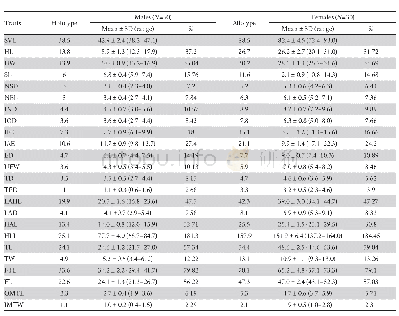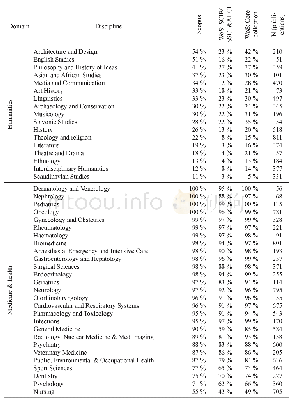《Appendix 1 Measurements (in mm) of hind limbs among ungulates with diff erent types of locomotion a
 提示:宽带有限、当前游客访问压缩模式
提示:宽带有限、当前游客访问压缩模式
本系列图表出处文件名:随高清版一同展现
《内蒙古二连盆地沙拉木伦地区中始新世全脊貘(Teleolophus)(奇蹄目:貘超科)头后骨骼研究(英文)》
Based on a) Osborn,1929;b) Wood et al.,2011;c) Bai et al.,2017a;d) Reshetov,1979;e) Qiu and Wang,2007.
The ternary diagram of the femur,tibia,and Mt III lengths separates out cursorial perissodactyls from other compared locomotor groups(Fig.8;Appendix I).The diagram shows that the cursorial generally scores higher on the length of the Mt III and lower on length of femur than graviportal,ambulatory and medioportal(Osborn,1929;Smith and Savage,1956).However,their tibial lengths overlap to some extent.One subcursorial taxon,Phenacodus primaevus,is grouped with ambulatory and medioportal.Recently,Gould(2016)suggested cursorial specilizations are not key innovations of Eocene perissodactyls,which accounts for the decline of condylarths in the Early Eocene.Equus and most cursorial artiodactyls have relatively longer Mt III and shorter femurs than extinct cursorial perissodactyls.However,Eocene oromerycid Eotylopus reedi is grouped with latter group.Teleolophus(with estimated femur length 260 mm)is clearly grouped with extinct cursorial perissodactyls,scoring higher Mt III length and lower femoral length within the group(Fig.8).The result also suggests Teleolophus with an increased cursoriality as its contemporary Lophialetes among extinct cursorial perissodactyls,which is consistent with morphological analyses.
| 图表编号 | XD0020742600 严禁用于非法目的 |
|---|---|
| 绘制时间 | 2018.07.01 |
| 作者 | 白滨、王元青、孟津 |
| 绘制单位 | 中国科学院古脊椎动物与古人类研究所中国科学院脊椎动物演化与人类起源重点实验室、中国科学院生物演化与环境卓越创新中心、中国科学院南京地质古生物研究所现代古生物学和地层学国家重点实验室、中国科学院古脊椎动物与古人类研究所中国科学院脊椎动物演化与人类起源重点实验室、中国科学院生物演化与环境卓越创新中心、中国科学院大学地球科学学院、中国科学院古脊椎动物与古人类研究所中国科学院脊椎动物演化与人类起源重点实验室、美国自然历史博物馆古生物学部 |
| 更多格式 | 高清、无水印(增值服务) |
查看“Appendix 1 Measurements (in mm) of hind limbs among ungulates with diff erent types of locomotion as defi ned by Osborn”的人还看了
-

- Table 4 Morphometric measurements (in mm) of the type series of O.ichangensis sp.nov.from eight populations across its d
-

- Appendix 1.Coverage in Scopus and Web of Science of 2 0 15 and2 0 1 6 publications by discipline (with>50 publications i
-

- Appendix 1.Coverage in Scopus and Web of Science of 2 0 15 and2 0 1 6 publications by discipline (with>50 publications i
-

- 表3 两组运动干预对下肢等动肌力 (峰力矩N·m) 的影响 (±s) Tab.3 Comparison of isokinetic muscle strength of lower limbs in patients of two grou





